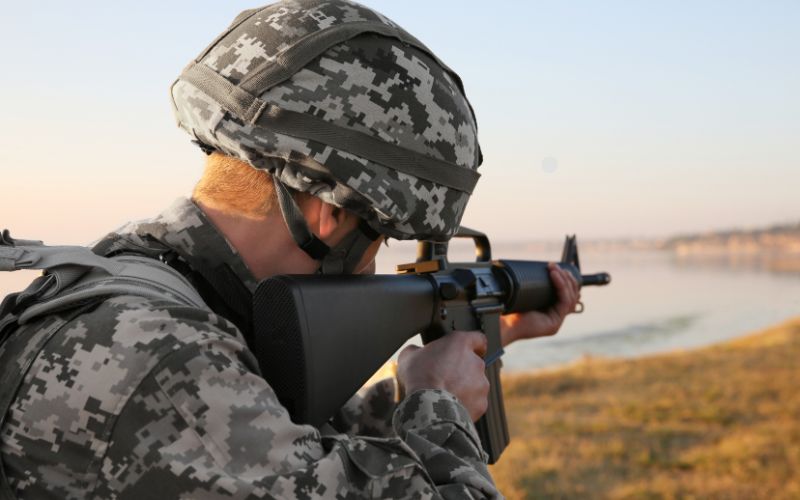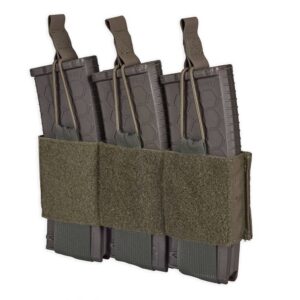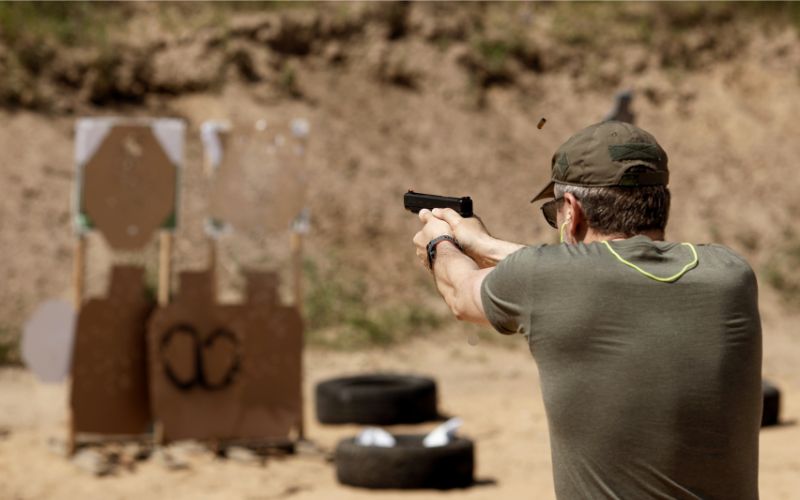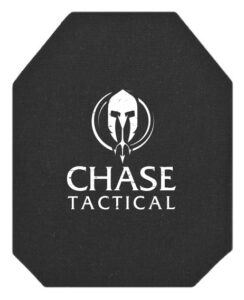The Basics Of Tactical Firearms: What You Need to Know

In today’s rapidly changing world, understanding the basics of tactical firearms is crucial for those interested in self-defense, law enforcement, or military applications. Tactical firearms are not just regular guns; they are designed for precision, efficiency, and effectiveness in high-pressure situations. Whether a beginner or an experienced shooter, grasping the fundamentals can enhance your skills, boost your confidence, and ensure safety. Today’s blog will guide you through the types of tactical firearms, essential training techniques, and vital safety practices, providing a comprehensive overview of what you need to know to get started on the right foot.
Types Of Firearms
Tactical firearms come in various forms, each designed for specific purposes and scenarios. Understanding firearm types helps choose the right one for home defense, professional use, or recreational shooting. Here, we’ll explore some of the most common types of tactical firearms, focusing on their unique features and applications.
Handguns
Handguns are versatile, compact firearms that are easy to carry and conceal. They are ideal for close-quarter situations and are commonly used for self-defense and law enforcement.
Handguns come in two main types:
- Revolvers
- Semi-automatic
Revolvers are popular for their reliability and simplicity, featuring a rotating cylinder that holds the ammunition. On the other hand, semi-automatic pistols use a magazine to feed ammunition and offer faster reloading times and higher ammunition capacity. For those who carry extra magazines, products like the CT Triple Kangaroo 5.56 Mag Insert can be essential for quick and efficient reloads.

Rifles
Rifles are long-barreled firearms designed for precision and range. They are commonly used in hunting, target shooting, and military operations. Tactical rifles, such as the AR-15, offer customizable features and are highly accurate, making them popular among enthusiasts and professionals. These firearms use various types of ammunition, including full metal jackets and hollow-point bullets, each serving different purposes. Add accessories like the Rifle Insert Anti-Spall Sleeve to enhance the protection level.
Shotguns
Shotguns are powerful firearms designed to fire a spread of pellets, making them effective for close-range targets. They are often used in home defense, law enforcement, and certain hunting applications. Tactical shotguns typically feature shorter barrels and higher-capacity magazines, enhancing maneuverability and firepower. Shotguns’ versatility allows them to be used with different ammunition variants, such as buckshot, birdshot, and slugs. A shotgun shell pouch can be highly useful for carrying extra ammunition.
Submachine Guns
Submachine guns are compact, fully automatic firearms designed for rapid fire. They are commonly used by military and law enforcement for close-quarter combat. These firearms are chambered for pistol cartridges, offering high rates of fire and easy handling. The iconic Uzi and MP5 are examples of submachine guns known for their reliability and effectiveness in tactical situations.
Assault Rifles

Assault rifles are guns that can shoot one bullet at a time or keep shooting as long as the trigger is pulled. They are standard issues in many military forces around the world. Assault rifles like the AK-47 and M16 are known for their durability, accuracy, and adaptability in various combat scenarios. They use intermediate cartridges, balancing power, and control for effective performance at both close and medium ranges. Consider equipping yourself with a MEAC Active Shooter Response Kit or a QRC Active Shooter Armor Kit for active shooter response scenarios.
Sniper Rifles
Sniper rifles are designed for long-range precision shooting. These rifles feature high-powered optics, heavy barrels, and specialized ammunition to ensure accuracy over extended distances. Used primarily by military snipers and law enforcement sharpshooters, sniper rifles require advanced training and expertise. Popular models include the M24 and the Barrett M82, which are known for their exceptional range and stopping power.
Machine Guns
Machine guns are automatic firearms capable of delivering sustained and continuous fire. Military forces typically use them to provide suppressive fire and support infantry operations. Machine guns like the M249 and M60 offer high rates of fire and significant firepower, making them crucial in various combat scenarios. Due to their complexity and the tactical considerations involved in their use, these firearms require specialized training.
Tactical Firearm Deployment And Strategy
Tactical gun deployment is usually part of a larger plan in the conflict area. Military personnel and law enforcement have employed these weapons to gain a strategic advantage against enemies. When combined with other weapons, such as bombs, artillery, and aerial forces, tactical guns play a key role in achieving military success.
For instance, the tactical deployment of warheads, missiles, and torpedoes as military assets can critically restrict an enemy’s capacity to react effectively. In war, every device, including tactical weapons, is a component of a greater system that guarantees mission accomplishment. From the Cold War to the current conflict in Ukraine, the significance of sophisticated military technology, including weapons, cannot be overemphasized.
Tactical Firearm Training

Proper training is essential for anyone using tactical firearms, ensuring both effectiveness and safety. Tactical firearm training encompasses a variety of skills, from basic handling to advanced combat techniques. This part of the article will explore the key aspects of training, providing insights into what you need to know to become proficient with your firearm.
Basic Firearm Handling
Basic firearm handling is the foundation of all tactical training. It includes learning how to load, unload, and handle your firearm safely. It’s important always to point the gun in a safe direction, keep your finger off the trigger until you’re ready to shoot, and know how your gun works. Familiarizing yourself with your weapon’s operation in tactical operations, including its safety features and maintenance requirements, is crucial for effective use.
Shooting Stances And Grips

Proper shooting stances and grips are vital for accuracy and control. Different stances, like the Weaver and Isosceles, provide stability and balance, enhancing your shooting performance. A correct grip ensures better recoil management and quicker target reacquisition. Training should focus on finding the best stance and grip for you, allowing for comfortable and consistent shooting.
Target Acquisition And Accuracy
Target acquisition and accuracy are critical components of tactical firearm training. This involves learning to identify and engage targets while maintaining precision quickly. Techniques such as sight alignment, sight picture, and trigger control are essential for hitting your target consistently. Regular practice of tactical tools, including dry firing and live range sessions, helps improve accuracy and speed in target acquisition.
Stress Management
Stress management is crucial to tactical training, as real-world situations can induce stress. Training often includes scenario-based exercises that simulate high-pressure environments. Remaining calm and focused under stress helps you make better decisions and perform better. Techniques like controlled breathing and mental visualization can help manage stress and improve effectiveness.
Close-Quarter Combat
Close-quarter combat (CQC) training prepares you for engagements in confined spaces. This includes techniques for room clearing, engaging multiple targets, and using your environment to your advantage. CQC training emphasizes speed, precision, and teamwork, often incorporating elements of hand-to-hand combat and defensive tactics. Mastery of CQC skills is essential for anyone involved in tactical operations. Utilizing chest rigs can enhance your effectiveness in CQC scenarios.
Advanced Shooting Techniques
Advanced shooting techniques take your skills to the next level, focusing on rapid target engagement, shooting on the move, and engaging multiple targets. This includes drills such as double taps, Mozambique drills, and failure-to-stop drills. Advanced training hones your reflexes and improves your ability to respond quickly and accurately to dynamic situations. Continuous practice and refinement of these techniques are key to maintaining proficiency. Additionally, consider equipping yourself with Level IV Rifle Armor Plates for added protection during training and real-life scenarios.

The Use Of Tactical Firearms In Contemporary Warfare
Whether in Ukraine or the world at large, contemporary warfare is characterized by combining multiple categories of military technology and weapons. Tactical guns are combined with heavy artillery, aircraft, and nuclear weapons, such as warheads or gravity bombs. The U.S. and Russia, for example, have produced and deployed stockpiles of atomic weapons with high yields in a show of warfare superiority that impacts global strategy and the threat of nuclear war.
Russia and the U.S. have high military capabilities, including advanced tactical equipment deployment. The strategic placement of these troops is central to territorial defense and offense, which affects international relations and wars.
The Role Of Tactical Guns In Counterterrorism
Along with traditional warfare, tactical firearms are crucial in counterterrorism operations. Military and law enforcement agencies worldwide depend on these weapons for rapid-reaction operations. From confronting hostile elements to capturing terrain, tactical firearms are key in the fight against terrorism. Military strategists highlight the necessity of proper deployment and coordination between branches to eliminate threats and ensure stability.
The Four Rules Of Firearm Safety
The Four Rules of Firearm Safety are universal guidelines that every shooter must follow:
- Treat every firearm as if it is loaded.
- Never point a gun at anything you do not intend to shoot.
- Make sure to keep your finger away from the trigger until you are ready to shoot.
- Be sure of your target and what is beyond it.
These rules form the cornerstone of safe firearm handling, preventing accidents, and ensuring responsible use.
Safe Storage Of Firearms
Proper firearm storage is essential to prevent unauthorized access and accidents. Firearms should be stored unloaded, in a locked container or safe, and separate from ammunition. Using trigger locks or cable locks adds an extra layer of security. Educating family members, especially children, about firearm safety and the importance of not handling tactical gear without supervision is crucial.
Cleaning And Maintenance Of Firearms
Regular cleaning and maintenance of your firearm ensure its proper function and longevity. Always ensure the gun is fully unloaded before cleaning. Follow the manufacturer’s instructions for disassembly, cleaning, and lubrication. Regular inspection for wear and damage and promptly replacing worn parts are crucial.
What To Look At When Selecting A Tactical Gun
Purpose: Are you looking for home defense, sport shooting, or professional use? This will help narrow your choices.
Price: Tactical firearms and accessories range from budget-friendly to premium. Decide on a budget that aligns with your needs.
Training: Owning a firearm requires knowledge and practice. Enroll in training sessions to learn proper handling and safety measures.
Rights and Regulations:
Understand your rights relating to guns and local legislation. Make sure to check for all the applicable regulations before buying.
Frequently Asked Questions
What is the caliber that beginners should opt for?
A 9mm is the best caliber for newcomers because it has minimal recoil and is widely available.
How would I determine the right kind of holster for my firearm?
Consider the gun models, like a Sig Sauer or Glock. Ensure the holster has an excellent fit and is accessible.
Are suppressors legal?
Suppressor ownership is not legal in all areas. Check the laws in your jurisdiction and comply with local requirements before purchasing.
